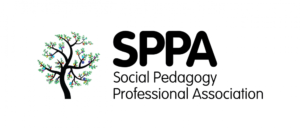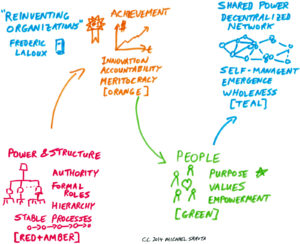By Dan Arrowsmith
May 2020

It is not very often that social workers are compared to superheroes, mostly because they are seen as the bad guys themselves. This blog though will be thinking of the deeper meaning of why social workers should be treasured and the core beliefs of why they choose the career in the first place.
 I’m sure most of us are familiar with the superhero ‘The Incredible Hulk’ and the story behind this. As a normal everyday man Bruce Banner gets on with his life, but when he gets stressed his heart rate rises and he becomes the hulk with immense anger, strength and power.
I’m sure most of us are familiar with the superhero ‘The Incredible Hulk’ and the story behind this. As a normal everyday man Bruce Banner gets on with his life, but when he gets stressed his heart rate rises and he becomes the hulk with immense anger, strength and power.
What I want to think about is how in my view social workers contain an inner Hulk or an inner ‘haltung’ that is bursting to break free, and often does during times of stress but not always in a healthy way. The same haltung that influenced many people to join the profession in the first place, a determination to help and support vulnerable people, to build relationships and to feel that they are really making a difference. A haltung that has formulated over their lifetimes from their own experiences and perspectives, shaping values and ethics to eventually guide their path into a career to help others. Also, sometimes staff need support and guidance when their haltung is challenged or needs further learning opportunities.
Sadly, the reality for many social workers is that their inner haltung can become suppressed within organisations, they become robots to process and systems, often feeling that they need to conform instead of fully allowing their inner haltung to be seen and heard. They become frustrated, feel vulnerable and disillusioned. In some cases, their haltung can become affected and they forget why they were so passionate about the profession in the first place. In my own experience, I have seen within frontline work when a social worker’s haltung can burst out like the hulk, and this is not healthy.
So my challenge to social care organisations, whether private sector or local authority, is this: How can we create an environment where social workers can harvest their haltung, nourish it, and avoid the outbursts of hulk frustrations? An environment where they feel that even in the most vulnerable situations they don’t become disillusioned or suppressed, where they are supported in times when haltungs are challenged?
Throughout the past six months, I have completed a lot of study around this issue and it has been very enlightening, it has reignited my own haltung and created a lot of reflection about how I myself had become robotic within the system. I have also tried to encourage my workplace to implement some different strategies in the team, mostly around communication. Overall, I didn’t like what I was becoming and suddenly became very aware of my inner Hulk. I questioned why organisations and professions had such different environments and cultures, and why in such an important profession we had become so concerned about allowing our true selves to influence the work that we do?
issue and it has been very enlightening, it has reignited my own haltung and created a lot of reflection about how I myself had become robotic within the system. I have also tried to encourage my workplace to implement some different strategies in the team, mostly around communication. Overall, I didn’t like what I was becoming and suddenly became very aware of my inner Hulk. I questioned why organisations and professions had such different environments and cultures, and why in such an important profession we had become so concerned about allowing our true selves to influence the work that we do?
I was fascinated with the theory of organisational change and the work of Laloux (2014). Laloux talked about the different types of organisations ranging from inclusive, creative and open organisations (‘Teal’ organisations), to hierarchal, military-style (‘Red’) organisations that rely on micro-management and restrictive structures. These are where staff are often worried about any form of challenge, and where workers’ haltung can  burst out in unhealthy frustration.
burst out in unhealthy frustration.
How do we change this within social work, which in many cases is a hierarchal and risk-averse environment? How do we do this when much of the culture within social work organisations is influenced by government legislations that have been critical of the profession, creating a feeling of organisational vulnerability? Of course this is not easy, especially in child protection teams where it’s important to have clear guidelines, but that doesn’t mean we can’t be creative on the ground. The human learning system theory recognises this and creates a good model of how organisations could work within important safeguarding and legal frameworks but still create an environment where creative work can flourish. So let’s have some thoughts on how some subtle but effective changes could be made.
One of my questions when I worked within a local authority team was why we don’t utilise the individual expertise of staff?
Again this is directly linked to workers’ haltung and why they joined the profession. This could be a specific interest such as domestic abuse, harmful sexualised behaviour, or developmental trauma, instead of workers managing various complex situations where they don’t always have the same level of confidence. The old saying ‘Jack of all trades and master of none’ always came to mind when I thought about this. Why can’t this special interest and knowledge be utilised? And support other colleagues to enhance their skills in certain areas? Surely this would enhance workers’ feelings of being valued and recognised for their individual abilities. Creating a situation where people feel de-skilled and knowledge becomes part of a list on a training log is unhelpful. Why are organisations so focussed on data collection instead of the quality of work?
I agree that monitoring timescales is important but in my opinion, this has too often been the primary focus. I’m not sure that when Munro (2011) wrote about using data she was recommending weekly data sheets where staff feel ‘named and shamed’.
 So my plea to organisations is this, you have so much experience,expertise and skill in your teams, to get the best outcomes surely it makes sense to nourish workers’ haltung like a plant, feed it with support and training and attend to it kindly when it requires direction or challenge.
So my plea to organisations is this, you have so much experience,expertise and skill in your teams, to get the best outcomes surely it makes sense to nourish workers’ haltung like a plant, feed it with support and training and attend to it kindly when it requires direction or challenge.
Let’s find a way like Bruce Banner where he could manage his emotions and not burst into the hulk when he became stressed. Let’s create a more Teal environment (Laloux, 2014): trust your workforce and provide an opportunity for constructive debate and opinion. Surely then social workers can begin to reignite their halting, benefitting them and the people that they support every day.
References
- Laloux, F. (2014) ‘Reinventing organisations: A guide to creating organisation inspired by the next stage of human consciousness’.
- Munro, E. (2011) ‘The Munro Review of Child Protection: a child-centred system’ Department for Education.

